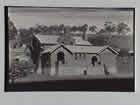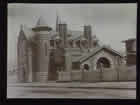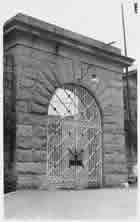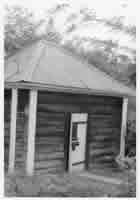In such a crowd, one half utter strangers to the other and to the colony, met together in a wild tract of broken forested country, full of secluded hollows, honey-combed with hundreds or thousands of ready-made graves, under such strong inducements to cupidity, disorder, and crime the imagination is free and unrestrained to picture that extent to which crime may … prevail in secret without the possibility of discovery.
Charles La Trobe
Statistics gathered by Ross McMullin indicate a dramatic rise in crime and lawlessness in the colony during the first couple of years of the gold rushes. In 1851 the number of people who were committed for trial in Victoria was 161, while in 1852 there were 802 committals in the colony. Even when qualified by the accompanying dramatic rise in immigration (in 1853 the colony’s population was almost double its pre-gold level), this appears a significant increase.
Further, it seems reasonable to assume that much crime on the goldfields in the early days went undetected and unrecorded. Makeshift settlements with no infrastructure, inhabited by largely itinerant, anonymous populations, made it difficult to identify offenders, let alone maintain law and order. Geoffrey Serle suggests that for former prisoners and escaped convicts from Van Diemen’s Land the diggings must have looked like a good place to hide out. He notes that many men ‘simply disappeared’ on the goldfields and imagines that there could have been many untraced murders. Opening the first session of the criminal court at Castlemaine in December 1852, Justice Redmond Barry observed, approvingly, that in 12 months there had been only one capital charge laid for an offence on the Mount Alexander diggings but, Robyn Annear wonders, ‘were the diggers at the Mount to interpret such a statistic as evidence that serious crime was virtually unknown on the diggings, or that its perpetrators went undetected?’
As La Trobe’s comments in the introduction suggest, officials certainly perceived crime to be rife on the diggings. The influx of Vandemonians to the Victorian goldfields fuelled this belief and observations of people such as Alfred Joyce seemed to confirm it. He wrote that there was ‘…. A most fearful want of protection for both life and property at the diggings [with] murder, robbery and lynch law [being] perpetrated with impunity.’
However, other contemporaries thought the goldfields were surprisingly peaceful places with law-abiding populations. Surveyor-General Andrew Clarke wrote of the 1853-54 period: ‘Not only were the goldfields peaceful, but there was a remarkable absence of serious crime.’ Late in 1853, a Methodist minister at Castlemaine claimed he had never lived anywhere where there was ‘greater security of life and property.’
The most common explanation for such differing contemporary opinions is that it depends which goldfields were visited and when. Some diggings such as Fryers Creek became notorious for criminal activity – its reputation being flagged with place names like ‘Murdering Flat’ and ‘Choke ‘em Gully’. The settlement reputedly attracted dodgy characters, with sly grog selling and gambling abounding alongside more serious criminal activity. A digger called Watkins who was working in the area found, ‘quarrels, dissensions, bloodshed, and danger of the direst description reign supreme.’
If you ignore the flagrant disregard of prohibition and the licence issue, it appears most diggers were law-abiding, even in the earliest days. But observations of goldfields like Fryer’s Creek suggest that in some places La Trobe’s worst fears were initially realised. Serle concludes that the large contingent of Vandemonians was probably responsible for the rise in crime recorded in the first couple of years of the gold rushes and that the ‘quality and respectability’ of immigrants from 1852 on helped turn the situation around. By the end of 1853 a strengthened, reorganised police force had bushranging under control, and on the main goldfields people and property were relatively safe.






